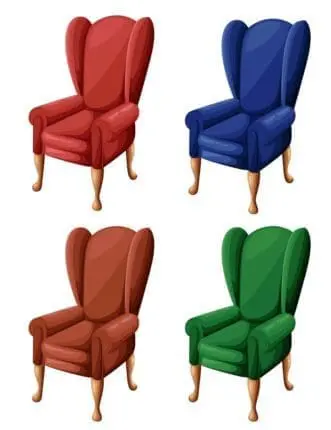When you decided to become a therapist, did you think about the fact that you’d be sitting in a chair for hours on end? It’s likely your grad school didn’t offer a class on helping clinicians sit all day. How do you manage it now? And how does the way you sit affect your clients’ experience in sessions?
I recently asked some workshop participants to role-play a typical therapy setup, in which a clinician sits in a chair across from a client. At one point in this mock session, the therapist leaned forward in her chair to show support and offer comfort to her client—a routine movement that felt quite natural to her. She was shocked to learn later that the client had felt discomfort instead. The therapist’s posture, she reported, made her feel pressured, as if her space was being invaded and she had no room to be herself.
When the therapist looked at her own embodied experience of leaning forward, she discovered that she was feeling tension in the front of her torso and in her legs. She also noticed her breath was shallow and cut off in this position. It certainly wasn’t a stance of openness, despite her thinking she’d been embodying a state of open curiosity.
How can we fix this? To start, I asked the therapist to feel her sitting bones drop into her chair as she allowed her spine to lengthen and widen. She immediately felt more breath and less tension, which was noticeable to others. As we went back to the mock session, the client felt like she had more space; she felt much more comfortable and welcomed.
Sitting up mirrors our evolved, upright, human design. But when you tell most people to sit up, they stiffen into a sort of military stance, their perceived image of “good posture.” This rigidity not only constricts the therapist and stifles expressiveness, but it also makes it harder for clients to feel open and fully engaged. Besides, the body isn’t happy in that stiffened-up posture, and most people find themselves slumping down after a minute or two, at which point they remind themselves to sit up—and the cycle goes on.
How do we break it? Recognize that in your habitual slump, you’re pulling yourself down in the front of your body. In can be for myriad reasons, including injury and fatigue, as well as shame and depression—none of which you want to present to clients. But before you counter it with opposing uprightness, you need to come in touch with the pulling down. Is it an old adaptive pattern that’s outlived its usefulness? Habitual patterns often bridge physical, mental, and emotional life.
There are many ways to address the pull-down. Taking a moment to “be with it” will often shift it. Or you can consciously feel the downward pull, and then release it upward a tiny bit at a time, not as a mechanical manipulation, but as an inner embodied choice. You may notice your breath change in the process. Either way, you need to stop pulling down before you can go up with ease and efficiency.
When you stop slouching downward, you regain a sense of balance, which allows you to access your body’s own inner support resources. Muscles want to be toned, not tensed or flaccid. Joints want to be free, not compressed. You sense your spine moving upward from inside, not being mechanically lifted. This allows the deep muscles close to the spine to engage, so the large surface muscles don’t have to hold you up.
Often when I teach this to therapists, not only do they feel their therapeutic presence change with clients, but their aches and pains become less frequent—and they feel more energized and less tired at the end of the day.
Photo © iStock/Alfadanz
Betsy Polatin
An internationally-recognized breathing/movement specialist and best-selling author, Betsy Polatin, MFA, SEP, has been teaching for more than forty years and is currently a master lecturer at Boston University’s College of Fine Arts. Her background includes meditation, trauma resolution, and the broader healing arts. Her work is greatly influenced by the teachings of spiritual and Meditation Masters. Betsy leads international trainings where she presents her unique and revolutionary fusion of ideas: scientific knowledge combined with ancient wisdom and intuitive human creativity. Teaching experience includes: Touch and Movement in Trauma Therapy, Kripalu, The Embodiment Conference, Psychotherapy Networker, Performing Arts Medicine Association, U.S. Association for Body Psychotherapy, Science and Nonduality Conferences, and International Trauma and Yoga Conferences in the US and abroad. Since 2016, she has been co-teaching ongoing traveling workshops, themed “Trauma and the Performing Artist” and “Trauma in the Public Eye,” with Peter A. Levine, PhD. She teaches Returning to Ourselves, the Wisdom of Trauma, with Dr. Gabor Maté. Betsy is the author of HUMANUAL, an Epic Journey to your Expanded Self and The Actor’s Secret. As a well-known educator, she has published numerous articles in the Huffington Post. She maintains a private practice online internationally. Please visit: www.HUMANUAL.com.












